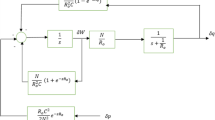Abstract
Since Internet is dominated by TCP-based applications, active queue management (AQM) is considered as an effective way for congestion control. However, most AQM schemes suffer obvious performance degradation with dynamic traffic. Extensive measurements found that Internet traffic is extremely bursty and possibly self-similar. We propose in this paper a new AQM scheme called multiscale controller (MSC) based on the understanding of traffic burstiness in multiple time scale. Different from most of other AQM schemes, MSC combines rate-based and queue-based control in two time scales. While the rate-based dropping on burst level (large time scales) determines the packet drop aggressiveness and is responsible for low and stable queuing delay, good robustness and responsiveness, the queue-based modulation of the packet drop probability on packet level (small time scales) will bring low loss and high throughput. Stability analysis is performed based on a fluid-flow model of the TCP/MSC congestion control system and simulation results show that MSC outperforms many of the current AQM schemes.
Similar content being viewed by others
References
Jacobson V. Congestion avoidance and control. In Proc. ACM SIGCOMM’88, Stanford, USA, Sept. 1988, pp.314–329.
Braden B, Clark D, Crowcroft J et al. Recommendations on queue management and congestion avoidance in the Internet. IETF RFC 2309, April 1998.
Floyd S, Kohler E. Internet research needs better models. ACM Comput. Commun. Rev., Jan. 2003, 33(1): 29–34.
Hui J Y. Resource allocation for broadband networks. IEEE J. Select. Areas in Commun., Dec. 1988, 6(9): 1598–1608.
Riedi R H, Willinger W. Toward an Improved Understanding of Network Traffic Dynamics. Self-Similar Network Traffic and Performance Evaluation, New York: John Wiley & Sons, 2000.
Floyd S, Jacobson V. Random early detection gateways for congestion avoidance. IEEE/ACM Trans. Net., Aug. 1993, 1(4): 397–413.
Floyd S, Gummadi R, Shenker S. Adaptive RED: An algorithm for increasing the robustness of RED’s active queue management. Aug. 2001, http://www.icir.org/floyd/papers/adaptiveRed.pdf.
Feng W C, Kandlur D, Saha D et al. Blue: A new class of active queue management algorithms. Technical Report, CSE-TR-387-99, UM, 1999.
Kunniyur S, Srikant R. Analysis and design of an adaptive virtual queue (AVQ) algorithm for active queue management. In Proc. ACM SIGCOMM’01, San Diego, CA, Aug. 2001, pp.123–134.
Floyd S. TCP and explicit congestion notification. ACM Comput. Commun. Rev., Oct. 1994, 24: 10–23.
Athuraliya S, Low S, Li V et al. REM: Active queue management. IEEE Network Magazine, May 2001, 15: 48–53.
Hollot C V, Misra V, Towsley D et al. On designing improved controllers for AQM routers supporting TCP flows. In Proc. IEEE INFOCOM’01, Anchorage, 2001, 3: 1726–1734.
Kwon M, Fahmy S. A comparison of load-based and queue-based active queue management algorithms. In Proc. SPIE ITCom, Aug. 2002, 4866: 35–46.
Gao Y, He G, Hou J. On exploiting traffic predictability in active queue management. In Proc. IEEE INFOCOM’02, New York, USA, June 2002, pp.1360–1369.
Gao Y, Hou J C. A state feedback control approach to stabilizing queues for ECN-enabled TCP flows. In Proc. IEEE INFOCOM, San Francisco, CA, 2003, 3: 2301–2311.
Ji Q, Dong Y. Performance evaluation of active queue management schemes: A comparative study. Journal of Communications, Nov. 2005, 26(11): 100–105, 111. (In Chinese)
Sang A, San-qi Li. A predictability analysis of network traffic. In Proc. INFOCOM 2000, Tel Aviv, Israel, March 26–30, 2000, 1: 342–351.
Stoica I, Shenker S, Zhang H. Core-stateless fair queuing: Achieving approximately fair bandwidth allocations in high speed networks. In Proc. ACM SIGCOMM’98, Vancouver, Sept. 1998, pp.118–130.
Tuan T, Park K. Multiple time scale congestion control for self-similar network traffic. Perf. Eval., 1999, 36: 359–386.
Misra V, Gong W B, Towsley D. Fluid-based analysis of a network of AQM routers supporting TCP flows with an application to RED. In Proc. ACM/SIGCOMM, Stockholm, Sweden, 2000, pp.151–160.
Hollot C, Misra V, Towsley D et al. A control theoretic analysis of RED. In Proc. IEEE INFOCOM, Anchorage, 2001, 3: 1510–1519.
Hollot C, Misra V, Towsley D et al. Analysis and design of controllers for AQM routers supporting TCP flows. IEEE Trans. Automatic Control, Jun. 2002, 47: 945–959.
NS-2 Network Simulator. http://www.isi.edu/nsnam/ns/.
Crovella E, Bestavros A. Self-similarity in World Wide Web traffic: Evidence and possible causes. IEEE/ACM Trans. Networking, Dec. 1997, 5(6): 836–846.
Author information
Authors and Affiliations
Corresponding author
Additional information
Supported by the National Grand Fundamental Research 973 Program of China under Grant No. 2003CB314801, the National Research Foundation for the Doctoral Program of Higher Education of China under Grant No. 20040286001 and the National Natural Science Foundation of China under Grant No. 90604003.
Qi-Jin Ji received his M.E. degree from Nanjing University of Posts and Tele-comunictions, China, in 2002 and Ph.D. degree in the Department of Computer Science and Engineering, Southeast University, Nanjing, China in 2005 respectively. His current research interest is in the areas of Internet congestion control and multimedia networking,
Yong-Qiang Dong received his B.E. and M.E. degrees from Nanjing University of Science and Technology in 1994 and 1997 respectively. Now he is a Ph.D. candidate in Southeast University, China. His research interests include network QoS, congestion control and multimedia communications.
Rights and permissions
About this article
Cite this article
Ji, QJ., Dong, YQ. Design and Analysis of a Multiscale Active Queue Management Scheme. J Comput Sci Technol 21, 1022–1030 (2006). https://doi.org/10.1007/s11390-006-1022-8
Received:
Revised:
Issue Date:
DOI: https://doi.org/10.1007/s11390-006-1022-8




